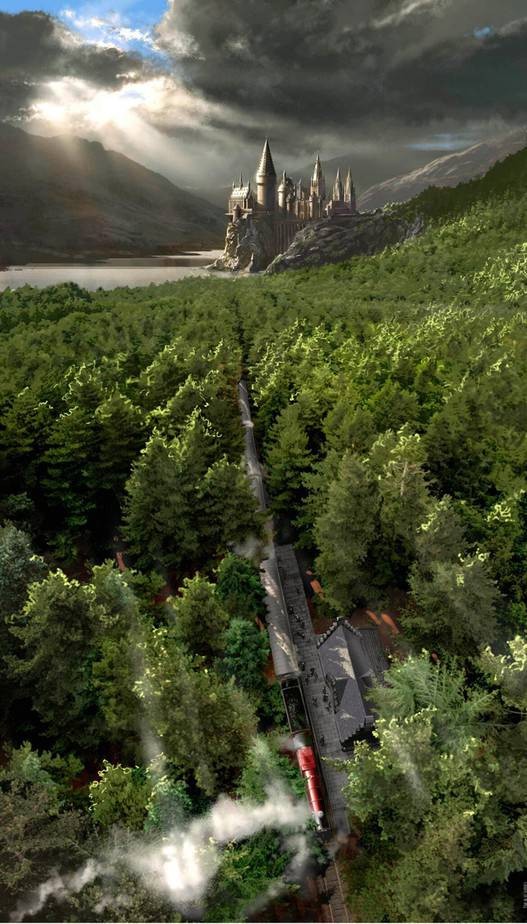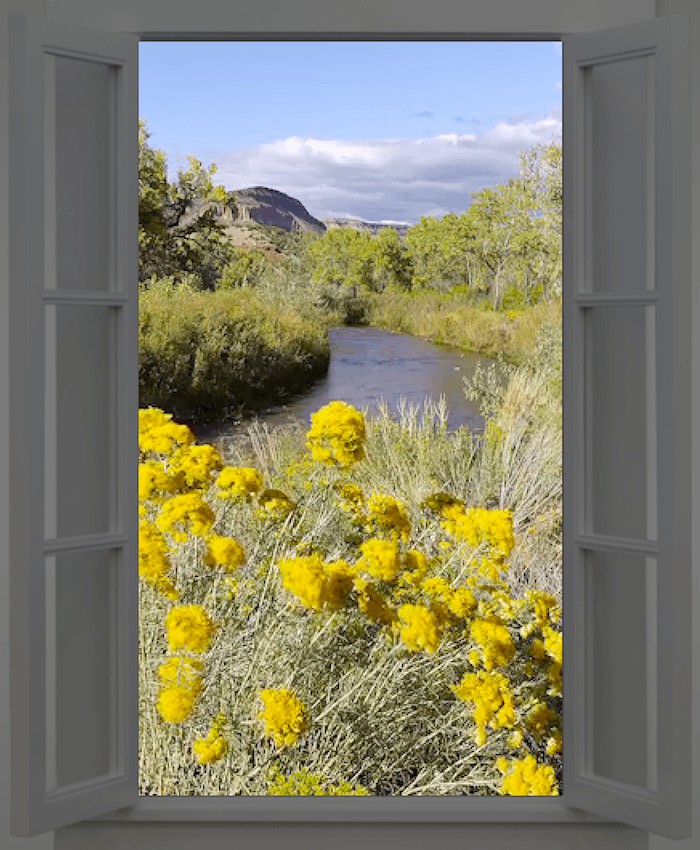Engineer Has Been Living Unplugged From City Life For 10 Years Thanks To Untraditional Home
It’s called an Earthship home.

For those unfamiliar with the concept of an Earthship home, let’s embark on a journey of discovery. Essentially, an Earthship is a type of passive solar abode constructed primarily from recycled materials, such as old tires. This innovative dwelling prioritizes the use of renewable energy sources to meet its heating, cooling, and power needs.
Furthermore, Earthship dwellers strive to minimize their environmental footprint by adopting resource-conscious practices, thereby reducing pollution and promoting sustainability.
Kristina used to live in Seattle.

In a career that spanned instructional engineering, one individual witnessed firsthand the staggering amount of waste generated within the typical home. This realization sparked a desire for change, which she pursued through a comprehensive learning process. She enrolled in various courses, seminars, and delved into bookshelves to gather valuable insights and knowledge. Her quest for sustainability was underway.
When she was ready, she sold her house in Washington.
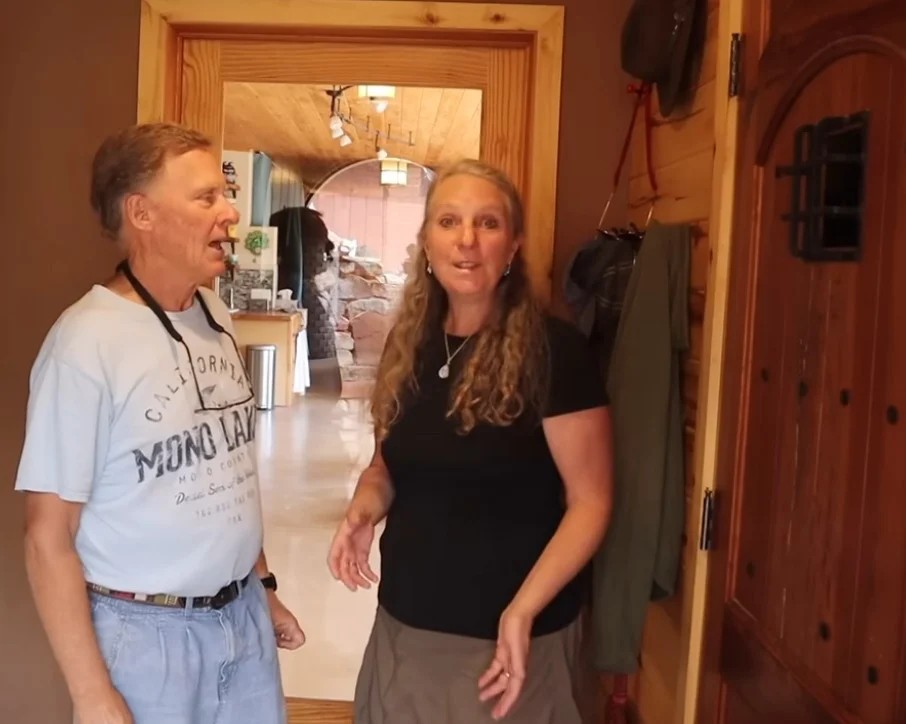
Using the funds generated from the sale, Kristine embarked on a journey to build her dream Earthship. This eco-friendly abode was constructed using recycled tires filled with densely packed dirt for its back wall, which was then reinforced with cob, or earth plaster. The exterior of the home was covered in lime plaster, providing a durable and sustainable finish.
As fate would have it, Kristine’s right people showed up during this time, including her partner Matt, who played a significant role in the building process.
The first room is the “airlock” room.
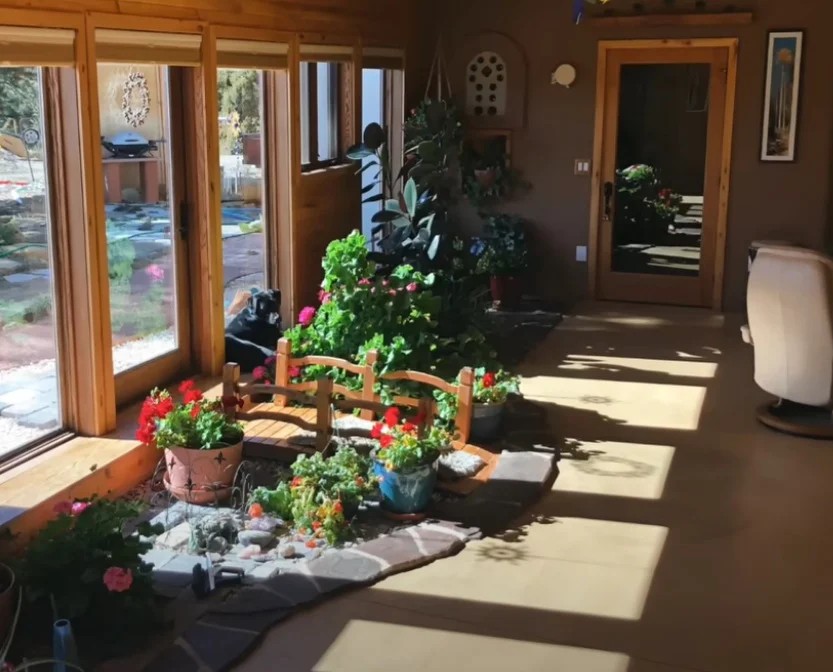
As you step into their home, the first thing that catches your eye is the cozy entryway where family members hang up their jackets and boots. But what may seem like just a practical spot to stash their outerwear actually plays a crucial role in maintaining a comfortable indoor climate. By creating a thermal buffer zone between the outdoors and the interior of the house, this area helps regulate temperatures, keeping the home warm in winter and cool in summer.
Meanwhile, the great room inside is where the action happens – it’s where they spend most of their time, relaxed and at ease. And if you think that’s impressive, just wait until you discover what they’ve done with their ‘garden’ – a lush oasis hidden within the walls of their home.
Their garden runs through the floor.
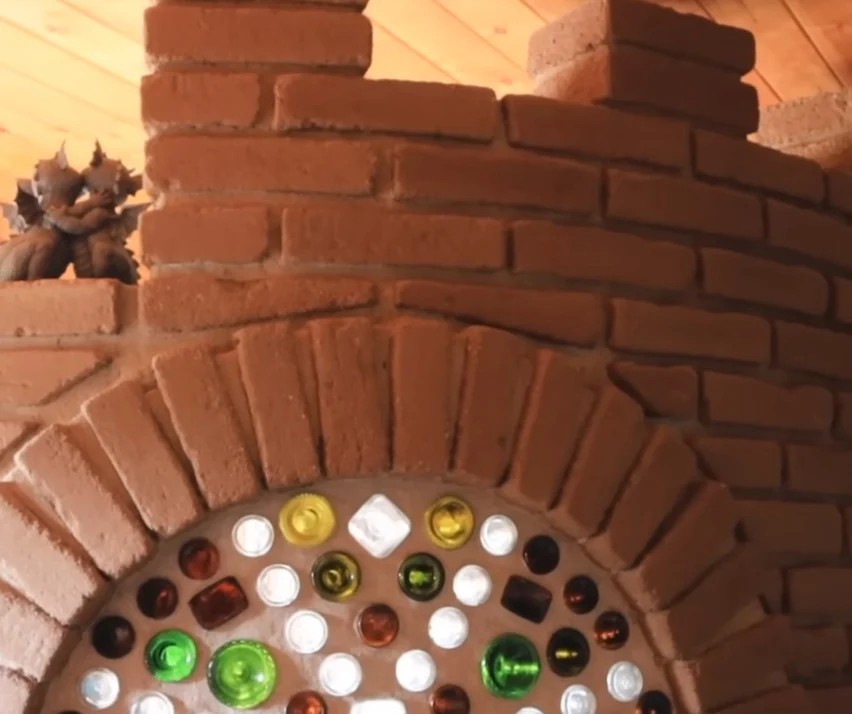
Then they have their “throne” room.
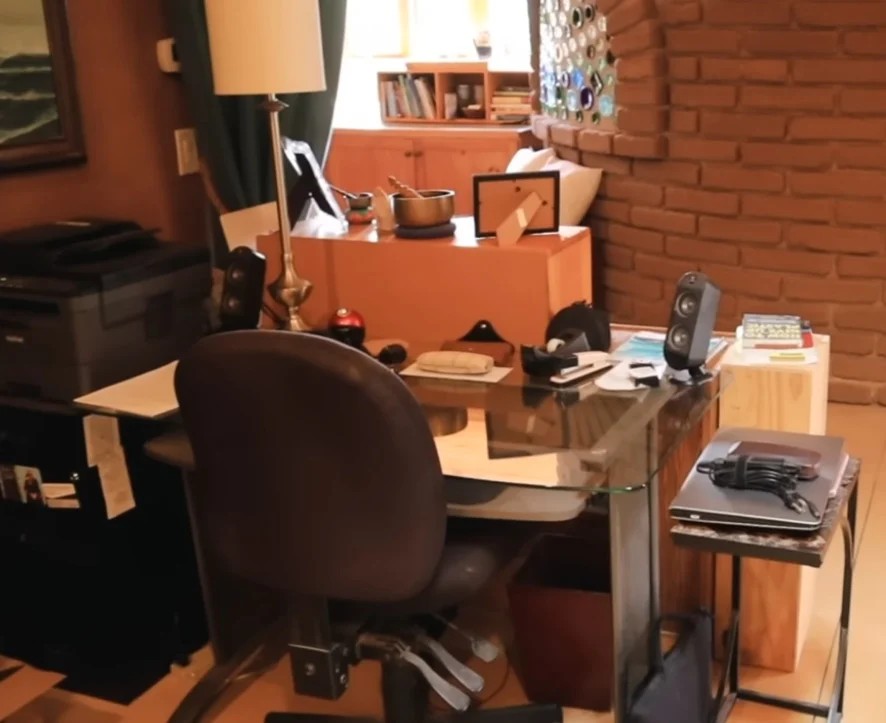
In their home, Kristine and Matt have incorporated sustainable living features that set them apart. The centerpiece of their eco-friendly setup is a composting toilet in the throne room, which showcases their commitment to reducing waste. Additionally, they’ve installed a clawfoot tub, adding a touch of luxury to their bathroom routine.
The couple also took me on a tour of their office area, formerly the kid’s room before they left home.
Since then, Matt and Kristine have converted it into their own workspace, complete with all the necessary amenities for a productive workday.
There’s also a ladder going to their loft bed.
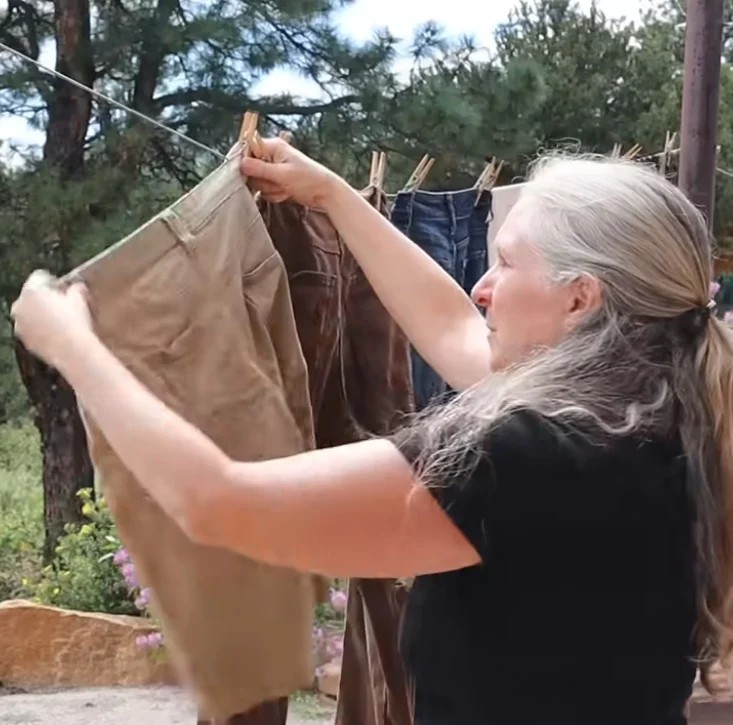
Kristine’s eco-friendly abode showcases a thoughtful approach to conserving natural resources. Within the walls of her seasonally adapted home, you’ll discover a washer designed to minimize water and electricity usage. This environmentally conscious choice is complemented by Kristine’s fondness for air-drying her clothes outside. The property also features a solar-powered water heater backed up by propane, conveniently located in the systems room. Furthermore, a 24-volt system powered by a 1.
2-kilowatt panel adds to the home’s sustainable appeal.
The home regulates its own temperature.
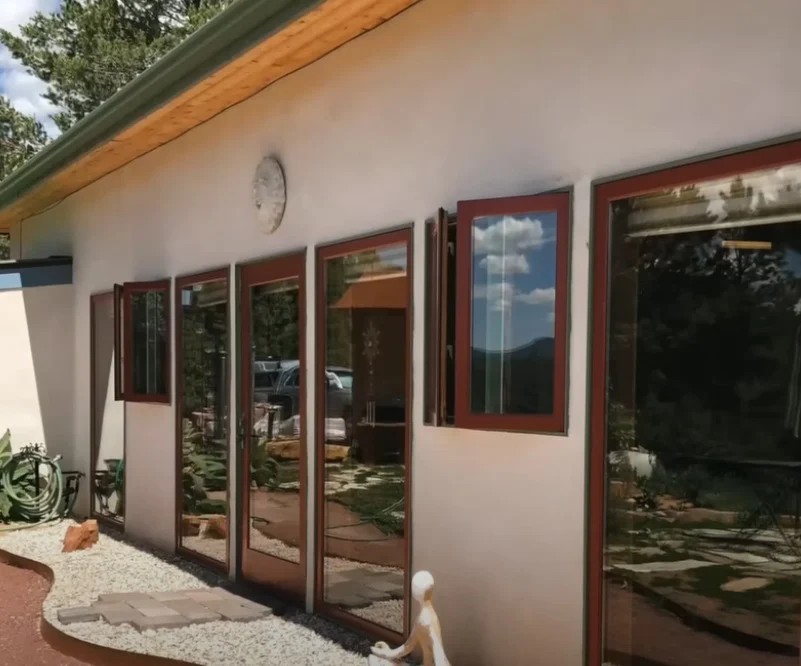
Matt and Kristine’s approach to building their house was meticulous. They carefully planned every aspect, including the placement, windows, and roofline, to control the amount of sunlight that enters the home. To achieve this, they excavated a section of the hillside and built the back wall of the house into it. This strategic design ensures the home remains insulated from harsh temperatures, with temperatures never dipping below 55℉ thanks to the thermal mass of the hillside.
Additionally, this configuration provides protection against wind and earthquakes, making their abode a cozy and secure haven.
They catch their water.
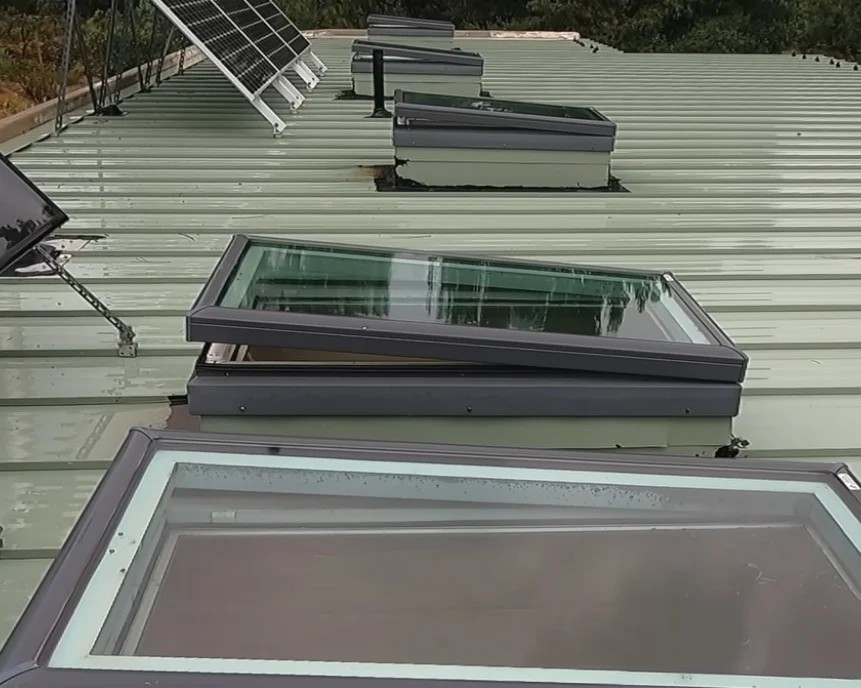
Kristine and Matt’s decision to adopt a water catchment system was driven by the challenges of drilling a well in their area. This alternative approach allowed them to maintain a self-sufficient lifestyle while minimizing their environmental footprint. The couple’s serene surroundings and lush garden, carefully tended with locally sourced materials, create a peaceful oasis that harmonizes with nature.

